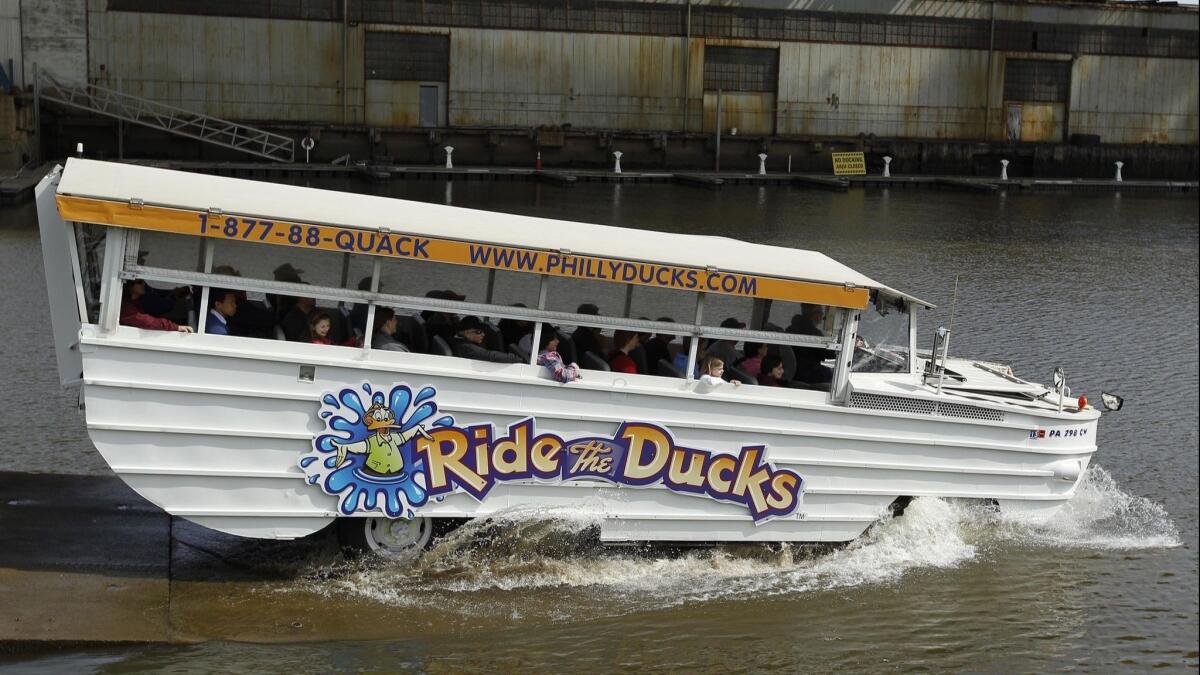Missouri duck boat attraction closed Baltimore branch in 2009 amid worker safety concerns, unionization push

The duck boat tour attraction on which 17 people died in Missouri previously operated in Baltimore until 2009, when it closed a month after workers sought to organize because of safety and scheduling concerns.
Divers in Branson, Mo., recovered 17 bodies from Table Rock Lake on Thursday evening and Friday after a Ride the Ducks boat sank during stormy weather. Wind gusts had reached 65 mph, according to the National Weather Service. Fourteen others survived, two of whom were hospitalized in critical condition.
In a statement posted to its website, Ride the Ducks Branson, which was acquired by Ripley Entertainment last year, said safety is its No. 1. priority. The company said it would be closed for business while it assists the families and supports the investigation.
“Words cannot convey how profoundly our hearts are breaking,” the company said.
Ride the Ducks operated tours of Baltimore and the city’s Inner Harbor from 2002 to 2009, allowing tourists to pass by historical sites on land before the vehicle would enter the harbor. At its height, the company gave up to 40 tours a day on eight vehicles in Baltimore.
The company ended its tours of Baltimore in September 2009, when a Ride the Ducks executive told the Baltimore Sun that investing more in the Baltimore branch was not worth the cost.
But a union representative said at the time the company had ended its Baltimore operation to retaliate against drivers and guides who had complained about the safety of workers, passengers and the amphibious vehicles. The company had 23 seasonal employees and six who worked year-round, the Sun reported.
There has not been another duck boat company in Baltimore since Ride the Ducks left, said Sara Warfield, vice president of communications for Visit Baltimore.
Phil Ornot, then a United Steelworkers organizer, alleged to the National Labor Relations Board that the company had intimidated, coerced and threatened staff. The union filed a petition to organize Ride the Ducks workers a month before the company announced it was closing the Baltimore attraction.
Records from the NLRB were not immediately available Friday, but the workers’ case before the NLRB was withdrawn in 2010, online records show.
Ornot could not be reached Friday. Bradley Hiles, a Missouri lawyer who represented the company in the labor dispute, did not return a call seeking comment.
Jeanne Williams, a captain on Ride the Ducks boats in Baltimore, told City Paper in 2009 that she had supported the unionization efforts “because we were concerned for the safety of the vehicles, ourselves, and our passengers.”
Bob Salmon, vice president of marketing and sales for Ride the Ducks, denied at the time that the union petition had anything to do with the company’s decision to end its Baltimore tours.
The tragedy in Branson, Mo., also recalled another tragedy in Maryland, when a water taxi capsized in Baltimore’s Inner Harbor in March 2004, killing five in the Patapsco River off Ft. McHenry, Md. That pontoon, called Lady D, overturned amid a gust of wind, spilling the captain, his mate and 23 passengers into the 44-degree waters.
Named for their ability to travel on land and in water, duck boats have been involved in other serious accidents in the past, including the deaths of more than 40 people since 1999.
“Duck boats are death traps,” said Andrew Duffy, an attorney whose Philadelphia law firm handled litigation related to two fatal duck boat accidents there. “They’re not fit for water or land because they are half car and half boat.”
Bogel-Burroughs writes for the Baltimore Sun.
More to Read
Start your day right
Sign up for Essential California for news, features and recommendations from the L.A. Times and beyond in your inbox six days a week.
You may occasionally receive promotional content from the Los Angeles Times.






